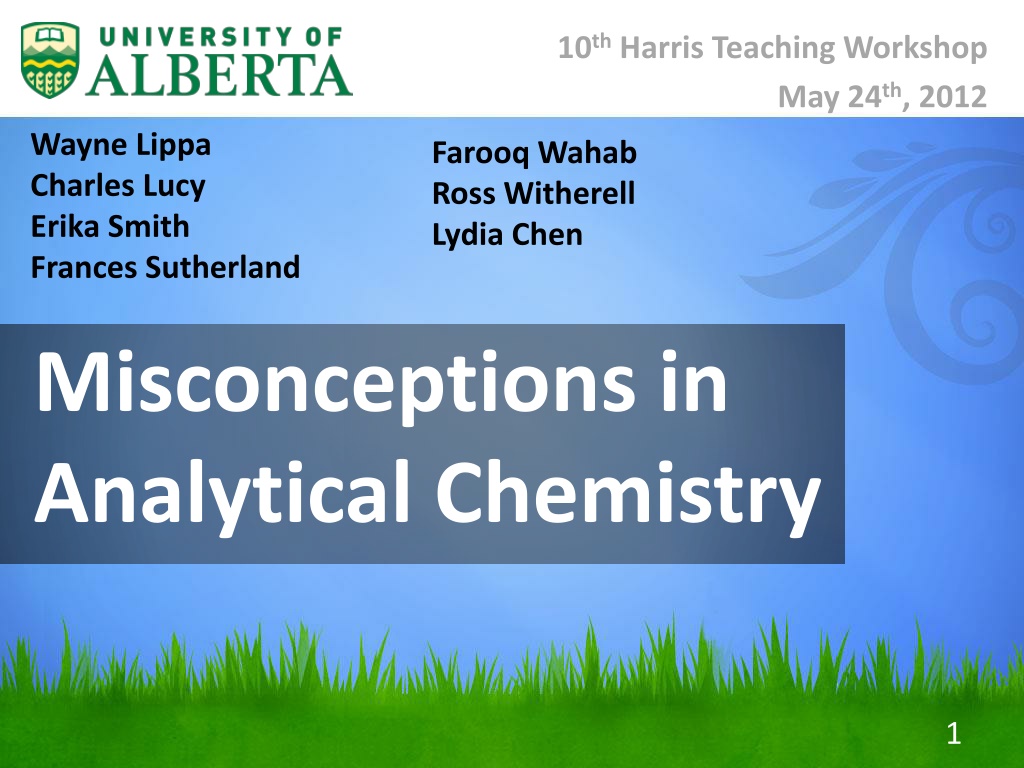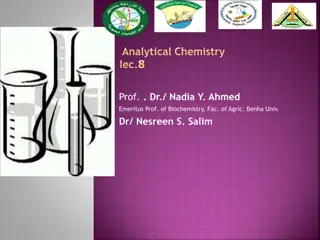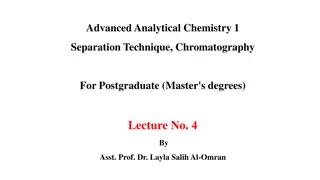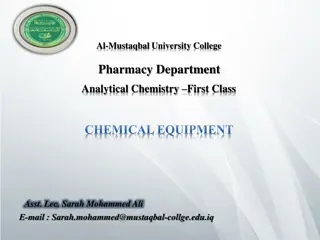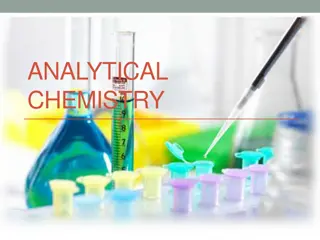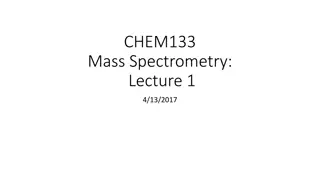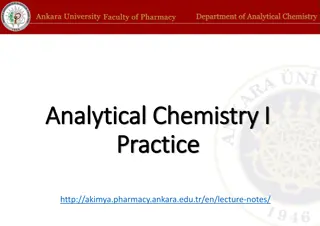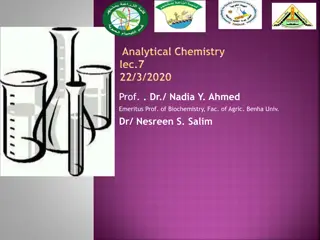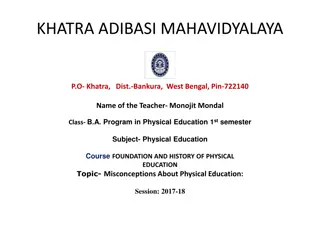Misconceptions in Analytical Chemistry Workshops
In Analytical Chemistry workshops, students often struggle with misconceptions related to titrations, significant figures, data recording, and instrument operation. Solutions include emphasizing error analysis, delaying focus on significant figures, promoting organized data recording, and clarifying instrument use. These strategies aim to enhance students' technical skills, understanding of statistical concepts, and efficiency in laboratory settings.
Uploaded on Mar 07, 2025 | 0 Views
Download Presentation

Please find below an Image/Link to download the presentation.
The content on the website is provided AS IS for your information and personal use only. It may not be sold, licensed, or shared on other websites without obtaining consent from the author.If you encounter any issues during the download, it is possible that the publisher has removed the file from their server.
You are allowed to download the files provided on this website for personal or commercial use, subject to the condition that they are used lawfully. All files are the property of their respective owners.
The content on the website is provided AS IS for your information and personal use only. It may not be sold, licensed, or shared on other websites without obtaining consent from the author.
E N D
Presentation Transcript
10thHarris Teaching Workshop May 24th, 2012 Wayne Lippa Charles Lucy Erika Smith Frances Sutherland Farooq Wahab Ross Witherell Lydia Chen Misconceptions in Analytical Chemistry 1
1. Analytical chemistry is ALL about Titrations! Titration is often emphasized both in lectures and labs. Students would tend to think that titration is what they will continue to use in graduate study and in research; however, that is usually not the case. Solution: We teach titrations in labs mainly to help students developing the technical skills required to execute an experiment. In lectures, focus more on the importance of error analysis may be more beneficial for students, rather than re-emphasize what is a titration curve. 2
2. Analytical chemistry is tedious with significant figures Students have a challenging time to understand how to decide how many significant figures to report. Students often don t understand why they have to pay attention to significant figures. Instruments spill out 15 decimal places, but students may be inclined to report all the numbers instead of taking a moment to think how many numbers is really important. 3
2. Analytical chemistry is tedious with significant figures Solution: don t dwell on significant figures until students have some understanding of statistics. This will help students to gain a better understanding as to why we are paying special attention to significant figures. Understanding when to pay more attention to significant figures will help students with time management skill. Students are learning how to be more efficient, eg. when to spend more time on measuring out a particular reagent. If the instruction said 5 mL, used a graduate cylinder, but if the instruction said 5.00 mL, used a buret! 4
3. I dont have time to write neatly during labs, so I am just going to Some students would scribble data on a piece of scrap paper, or even on a piece of paper towel during lab, then transcribe them laterto a good copy at home. Solution: reinforce students to come prepare with pre-made table where students can record their data during the lab. This will ensure students know what they are measuring. Also, it helps students to work more efficiently. Encourage students to do a flow chart of the overall experiment. This helps the students to visualize how the entire experiment would lay out and how much time they should aliquot to each steps and which steps are considered to be more important ! 5
4. Instrument is just about pushing buttons on a box! The instrument nowadays is often fully automated so operating it can be quite straightforward. Also, with popular TV shows, such as CSI, students often think they can get conclusions within minutes after putting samples into the instrument. Solution: Encourage students to understand how each components of the instrument work by showing them the interior of the instrument, ie. a modified GC-MS where the outer case of the instrument is made by Plexiglas so the interior of the instrument is exposed visually. 6
5. Sampling is irrelevant! Most samples given in labs are artificial. So students often think samples are going to be handed to them in a small glass vial when they are in a working environment. Solution: emphasize the importance of sampling in a discussion group. Guide students to think how they would do sampling in real life and what parameters would they consider in sampling. 7
Thank you for listening! Questions or Comments? 8
